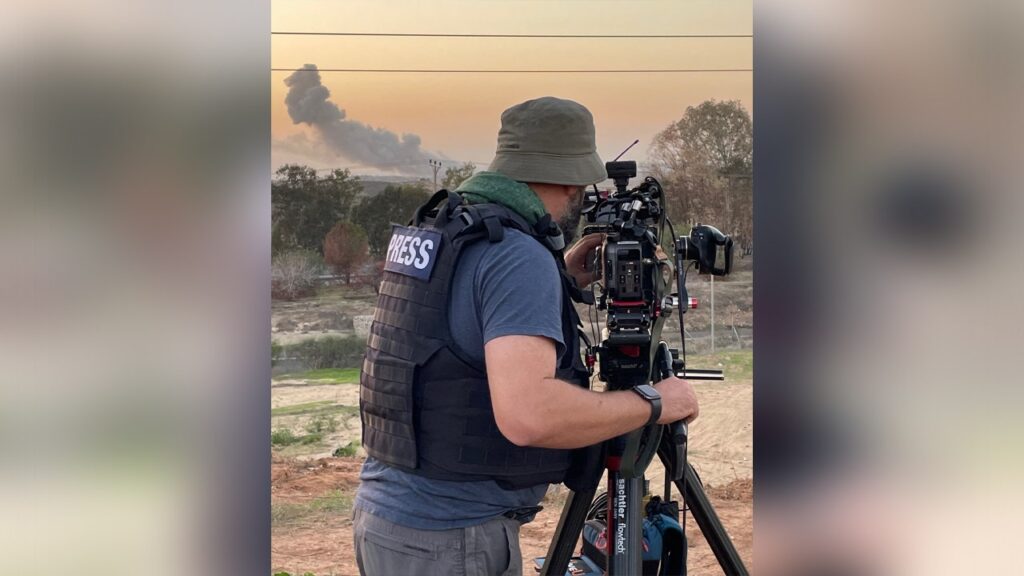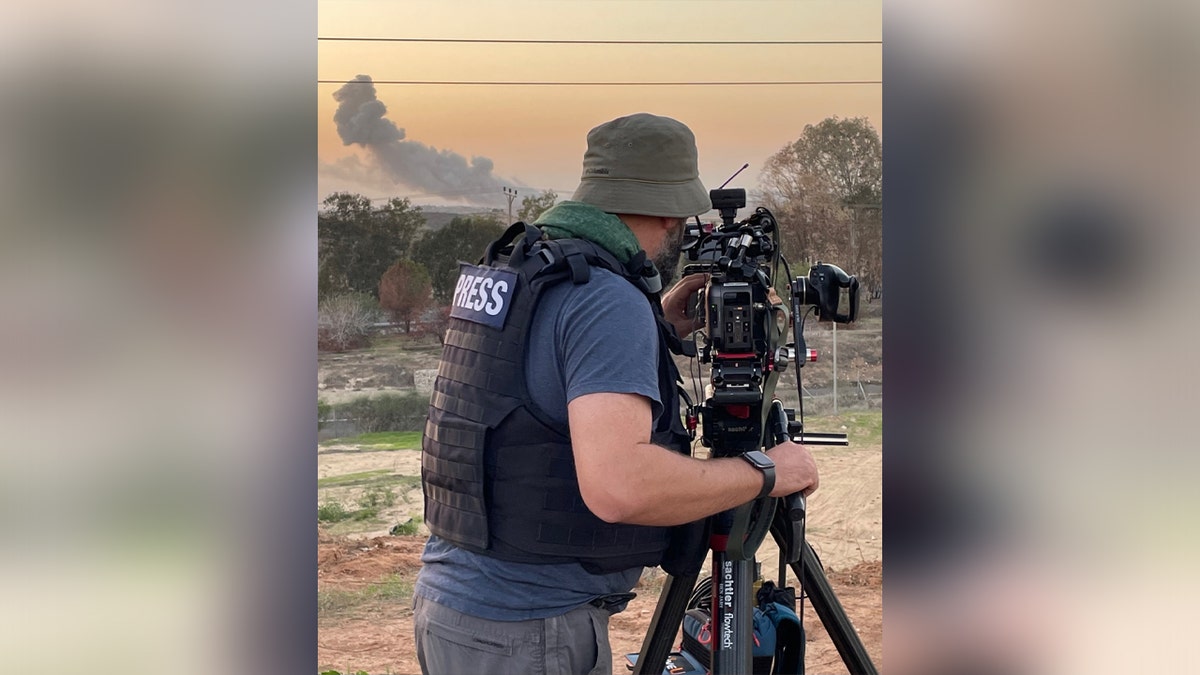
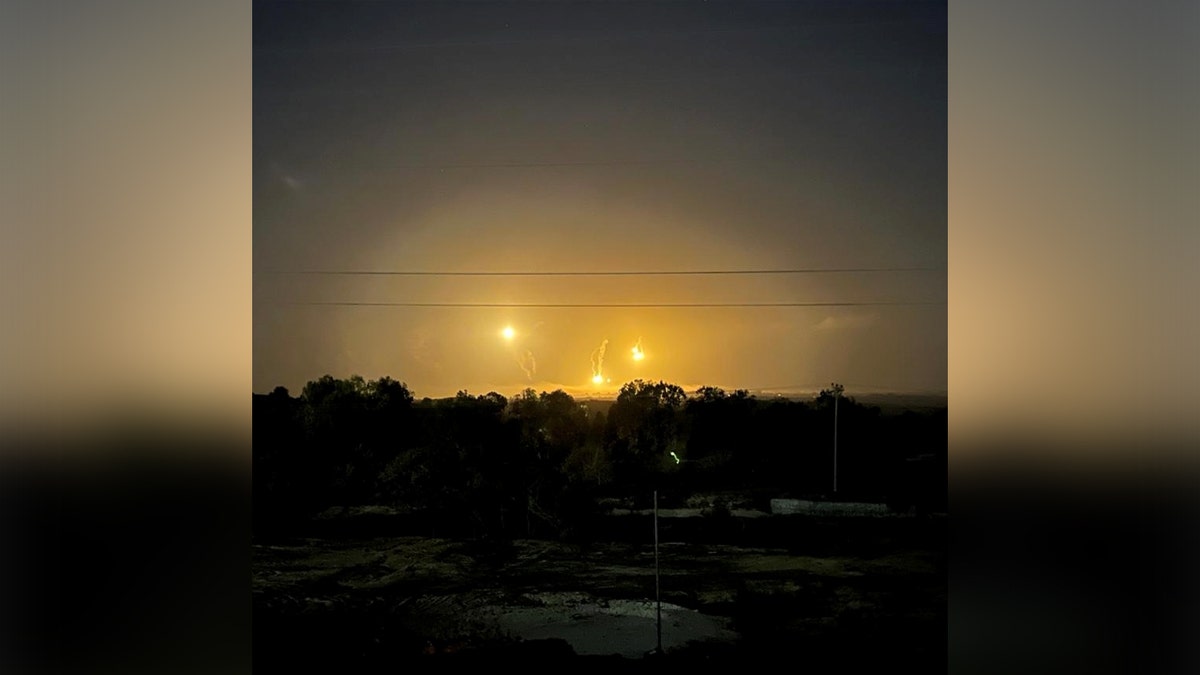

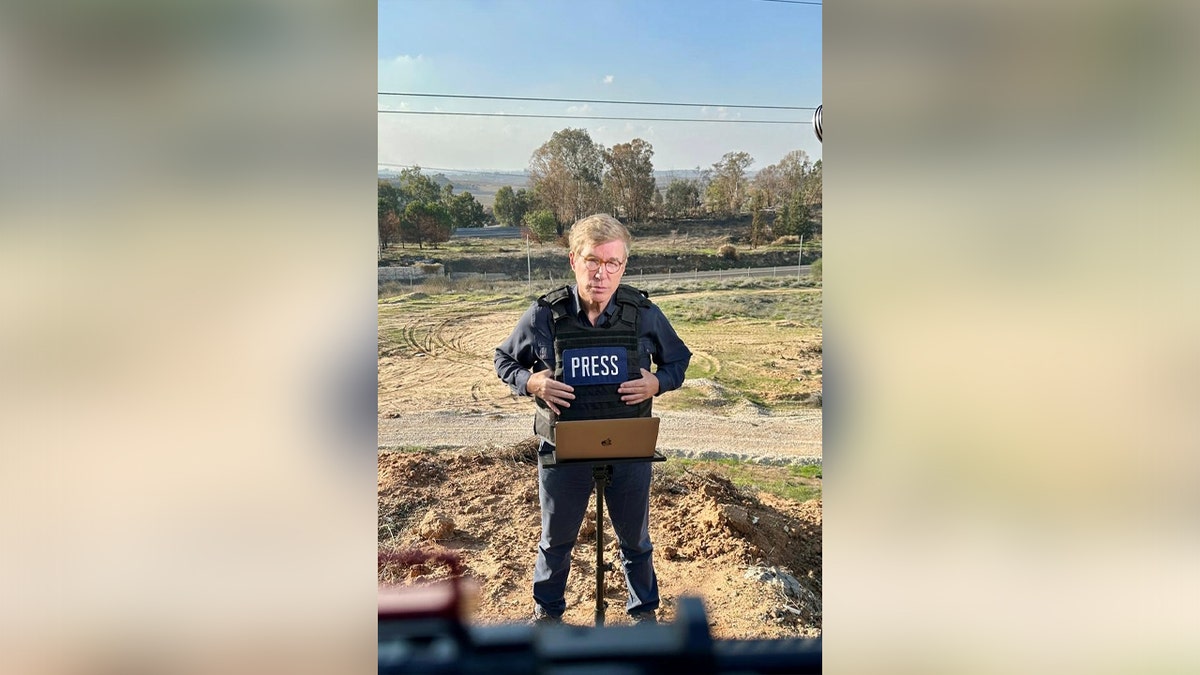
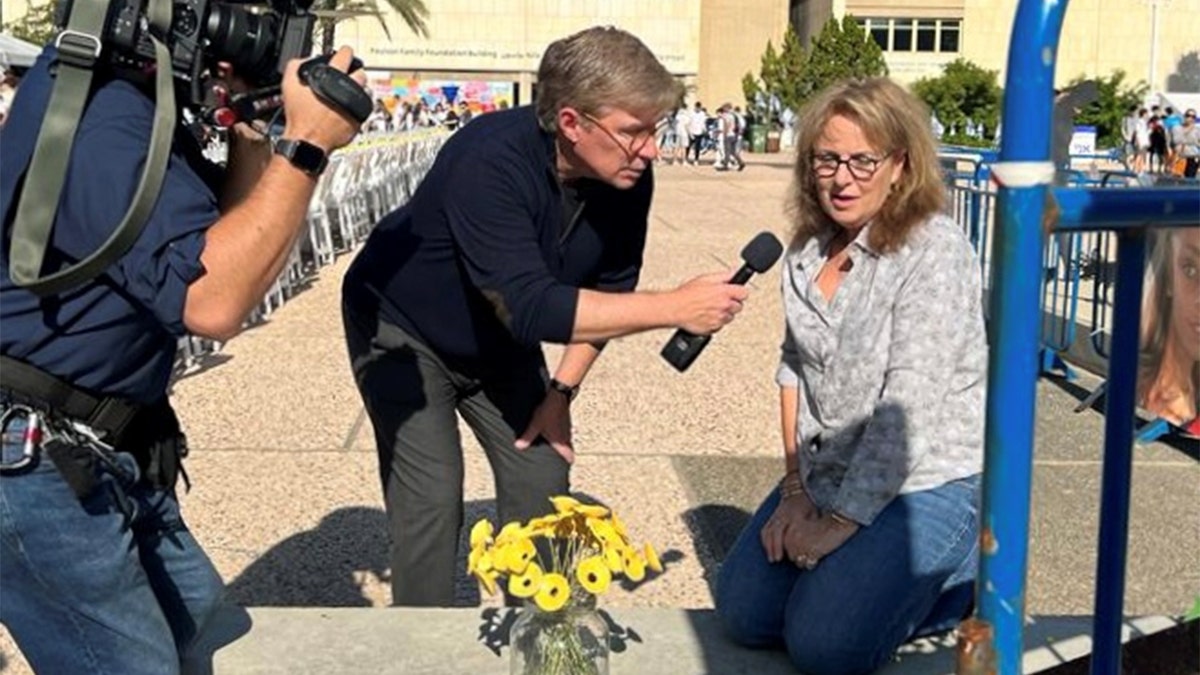
TEL AVIV – The coming week marks two months since the horrible Hamas terror attack on Israel that left 1,200 dead and 240 held hostage.
And it also marks our second trip to the region during this crisis.
Some things have gotten a bit better. There were over a hundred hostages freed and some relief aid made it to the battered people of Gaza during the brief cease-fire in fighting.
But to a large degree, things have gotten worse and more complicated.

Cameraman Ben Jary captures Gaza strikes in Sderot, Israel on Dec. 2. (Fox News)
When we were first in Israel in October, just two days after the attacks, the country was in a state of shock and frenzy.
One man we spoke with in Sderot couldn’t believe Hamas had turned his police station into a terror hideout.
A young Israeli American man in Ashkelon told us his 64-year-old father got nabbed by terrorists while he was simply surf-casting on a beach.
And near Ashdod, a funeral for a young lady killed at that targeted music festival was thronged. Her mother, wracked with grief, still wanted to speak to us about her innocent little girl.
CASUALTIES, KIDNAPPED AND MORE NUMBERS SINCE HAMAS’ ATTACK ON ISRAEL

Israeli military sends flares over Gaza on Dec. 1. (Fox News)
As the weeks went on, Israel’s military response ramped up. We watched as tanks rolled by. Heard the artillery fire. And tracked Israeli air force planes streaking to their Hamas targets in Gaza.
All the while, we kept an eye on a slow-moving and potentially dangerous offensive between Israel and Hezbollah in northern Israel.
After a short break at home, including a New York area Thanksgiving with my extended family, all peppering me with questions about the war, we were back on the scene.
We landed in the middle of the temporary cease-fire between the warring Israeli and Hamas parties to allow the exchange of hostages and Palestinian prisoners. Nerve-racking nights before the releases. Scenes of joyous family reunions. And horror tales of captivity.

Reporting in Tel Aviv on Nov. 30. (Fox News)
We heard from people in Tel Aviv in a place called Hostage Square, where remembrance displays have been set up.
“I cry every night,” one woman told us.
HAMAS TERRORISTS OPEN FIRE AT BUS STOP NEAR JERUSALEM, LEAVING 3 DEAD, 11 INJURED
“They are like family,” another said, referring to the hostages.
It was pressure from people like these that got the Israeli government to push for the releases.
RELIGIOUS LEADERS CALL ON CONGRESS TO ‘TAKE ACTION NOW’ TO COMBAT ANTISEMITISM, DEFEND ISRAEL

Greg Palkot reporting on the Israel-Gaza border on Dec. 1. (Fox News)
And pressure from the international community for Israel to allow more aid in to Gaza and give the beleaguered citizens there some respite.
But now all bets are off. The cease-fire broke down. Hostage releases have halted. And the war is back on.
In just the few days we first spent near the Gaza Strip in southern Israel we witnessed hellish warfare. Ground-shaking blasts of Israeli strikes. Huge plumes of smoke blown up into the air. Tracer fire, flares and Hamas rockets streaking through the night. Extended small arms exchanges
We speak with folks here whenever we can. Trying to get an inkling of what might be next. And what reasonable way there could be out of this ugly maelstrom.

Greg Palkot interviewing a family member of a hostage at Hostage Square in Tel Aviv on Nov. 30. (Fox News)
No one has a clear answer.
The general consensus is for Israel to get the hostages out and then deal with the Hamas terror.
I’ve covered the Mideast for 25 years and I’ve never seen a crisis so complex, so full of ugliness all around, and so little clarity about a path forward.
The scale of this crisis was confirmed in what one woman told us. She noted the Holocaust, of course, was the worst for her people and the world. But these last few weeks, she said, have been right up there.
She shuddered. We all do.
Greg Palkot currently serves as a London-based senior foreign affairs correspondent for Fox News Channel (FNC). He joined the network in 1998 as a correspondent. Follow him on Twitter@GregPalkot.
[ad_2]
Source link

